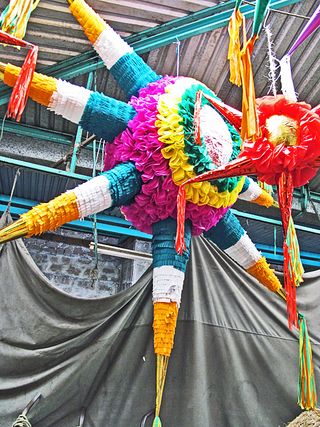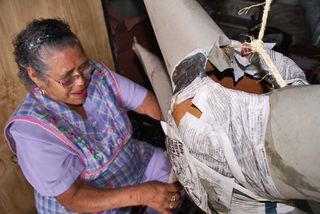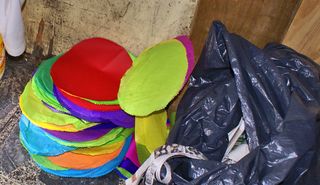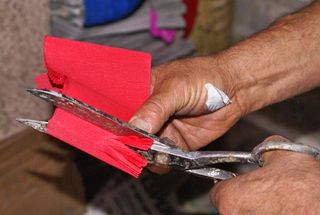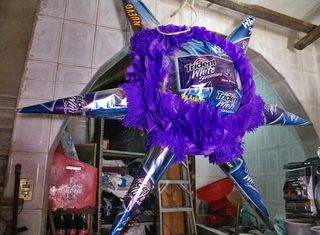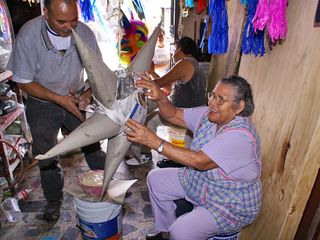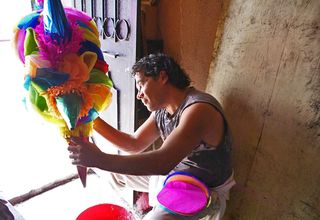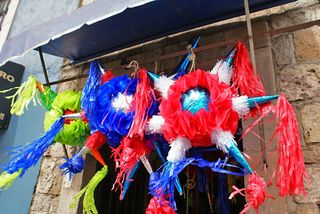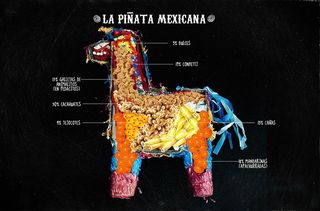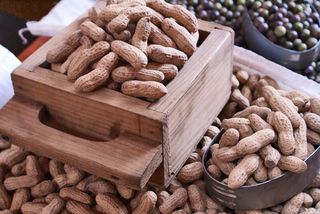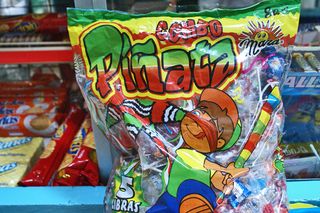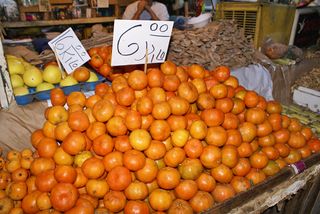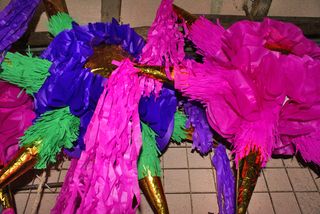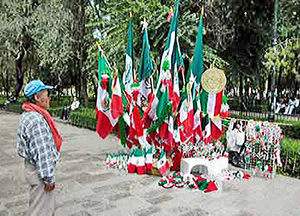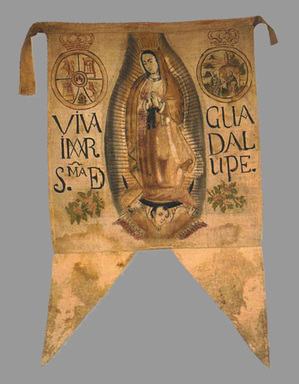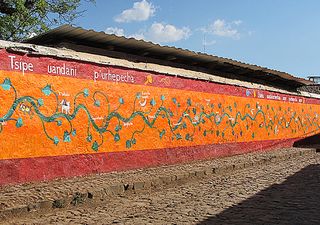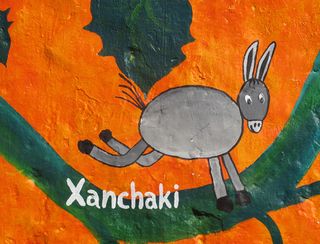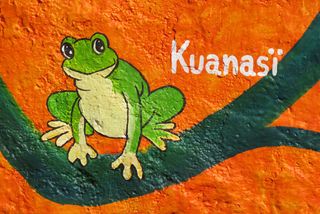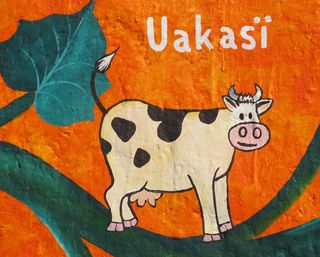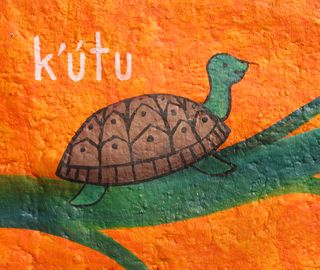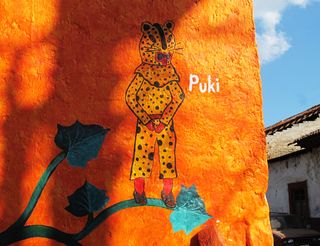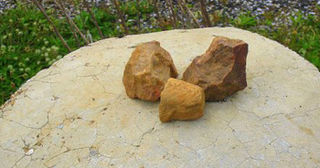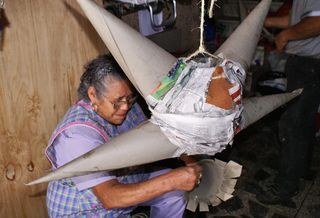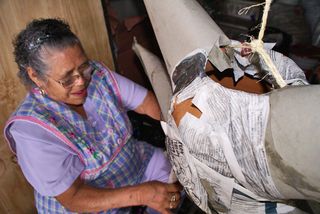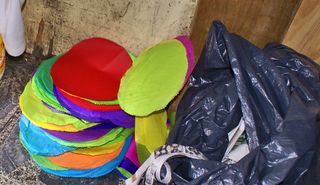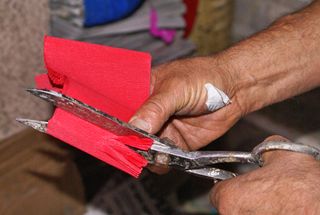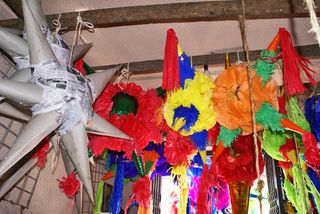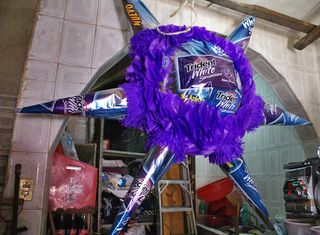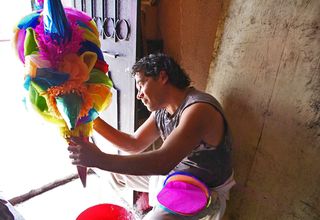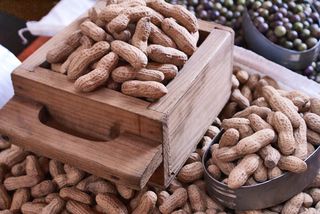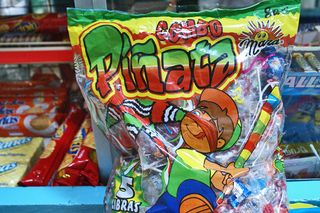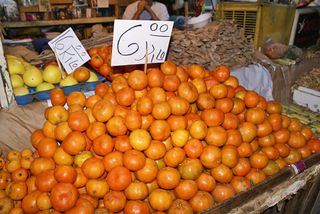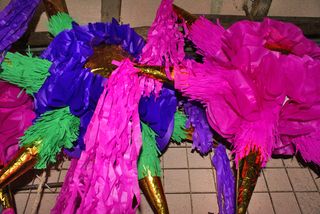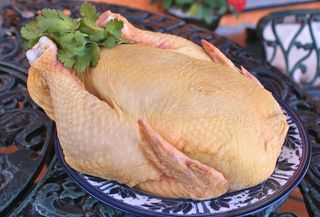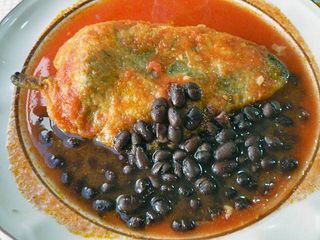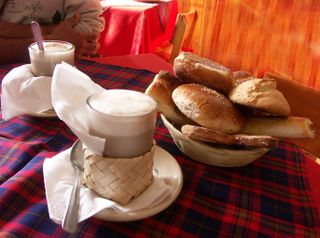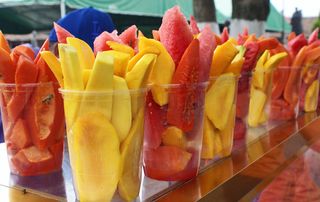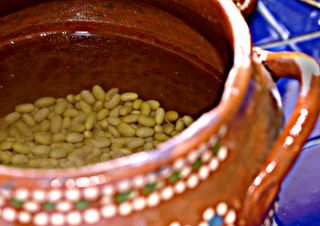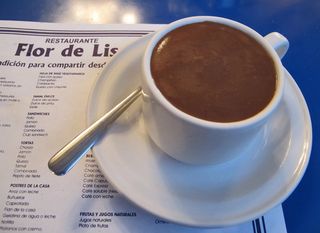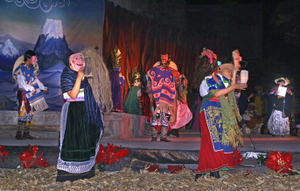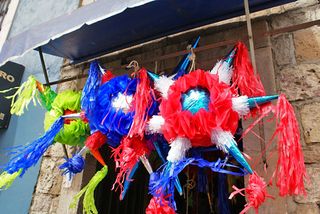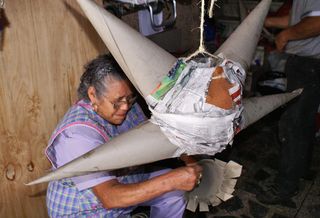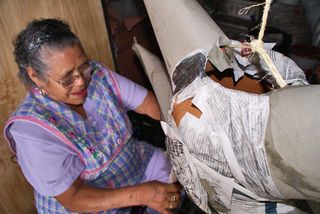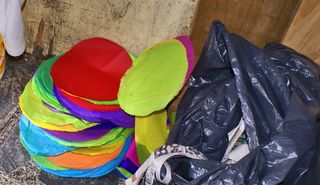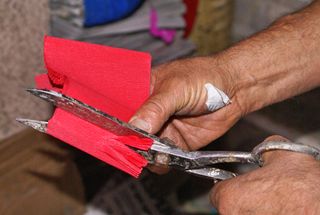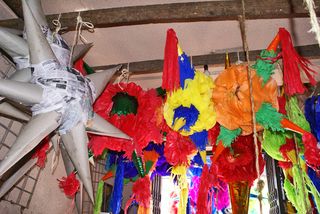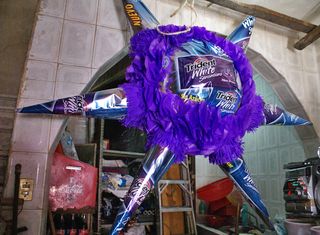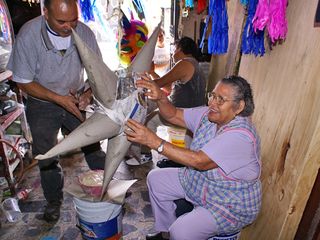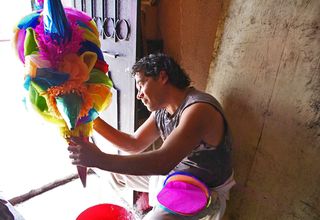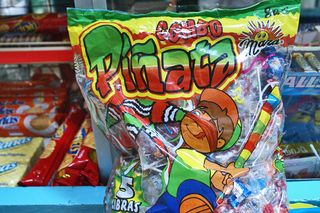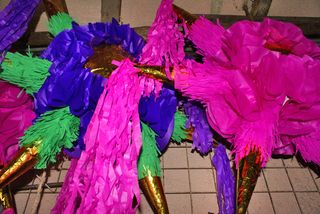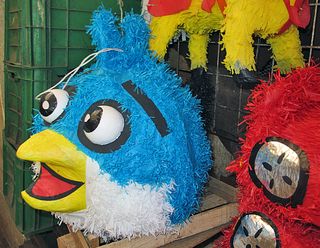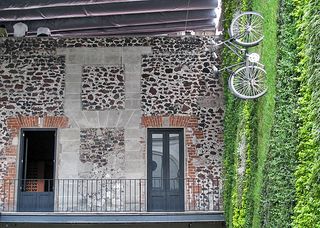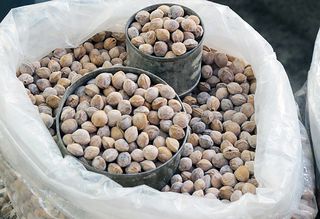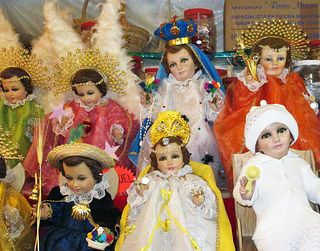This article, originally published at Christmastime 2007, has been extremely popular every Christmas since then. We think you will enjoy this slightly updated version…

A Seattle Christmas pageant, circa 1953. Thanks, Sandy in Seattle!
My school put on a Christmas pageant when I was in the third grade, back in the days before the law specified generic holiday greetings. Remember way back then, how Joey and Jimmy, Ralphie and Bobby, were the shepherds in their father's striped terrycloth bathrobes, the sashes tied three or four times around their waists? Chuck got to be Joseph and that prissy little Linda Beth got to dress in blue and white as the Virgin Mary when everybody KNEW it should have been you up there nuzzling the Baby Jesus. Here's a sweet little reminder:
[youtube=http://www.youtube.com/watch?v=clSUr9fLapY&w=320&h=240]

A 19th Century pastorela photograph showing Bartolo, the indolent shepherd who overslept and missed his chance to go to Bethlehem to see the Niño Dios (Christ Child).
In Mexico, a Christmas pageant, like almost everything, is different from Christmas plays North of the Border. Called a pastorela, the Mexican Christmas play is part very naughty topical comedy, part traditional drama, part Sunday school lesson, and 100% morality play. Pastorela means pastoral, or a play that takes place in the countryside, and concerns the activities of pastores, or shepherds. First introduced to Mexico by Franciscan missionaries in the 1500's, pastorelas continued to grow in favor here. Today, the plays are one of the most popular Christmastime entertainments. The theme portrays the eternal conflict between good and evil. The plot revolves around the pilgrimage of the shepherds to Bethlehem to see the newborn Niño Dios.
The devil is not ordinarily associated with Christmas. In Mexico, however, Satan plays a very solid role in the holiday festivities. He is actually the star! Lucifer works all his worst wiles to detour the shepherds away from their destination. Costumed as various alluring personages, Satan and his apprentice devils do their best to trick the shepherds into abandoning their journey to redemption. At the end, Satan is tricked, good triumphs, the shepherds meet the Holy Family, and all is well.
Several years ago, Mexico Cooks! spent a week or so looking for a pastorela to be presented at a time we could attend. One day I noticed an article in the newspaper about a pastorela that was being offered that very night in Cuitzeo, a small town about an hour north of Morelia. The title of the play (El Ermitaño.com: The Hermit.com) was intriguing, the photo of the performers in costume looked exciting, and the timing was right. I called my friend Bunny, who jumped at the chance to accompany me to the evening performance, and we were off to Cuitzeo.
Cuitzeo reached the status of Mexican Pueblo Mágico, the third in Michoacán, in 2006. The requirements for the Pueblo Mágico designation are:
- a town or city rich in tradition
- located in an area of high interest to tourists
- that it have a strong history
- that it have ready access from major highways
You'll see in this video that Cuitzeo easily meets Pueblo Mágico criteria.
Our pastorela took place outside, on the grounds of the Ex-Convento de Santa María Magdalena, a 16th Century Augustinian convent. We stopped first in the church to see the Christmas decorations.
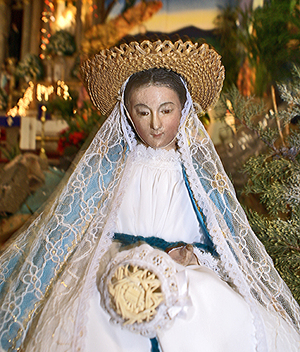
Cuitzeo's 17th Century Virgin Mary wears a charming straw sombrero, carries a lace-trimmed basket, and rides a donkey as she and Joseph travel to Bethlehem.
The presentation of El Ermitaño.com, written by the wonderful contemporary Mexican playwright Miguel Sabido, was sponsored by Adopt a Work of Art, the Michoacán Secretary of Tourism, the Cuitzeo city government, the National Institute of Anthropology and History, and the newspaper La Voz de Michoacán. We discovered that this pastorela was not a simple country town's Christmas caprice. It is a sophisticated, professional play of great good humor.
According to Miguel Sabido, "The culture which distinguishes Mexico is both vast and rich, but it's composed of more than our country's admirable buildings. Mexico has its greatest patrimony in its popular rituals, and its recipes like the pinole cookies that are only made here in this region, and the pastorelas. These are Mexico's legacies and we must make a commitment to spread her traditions."
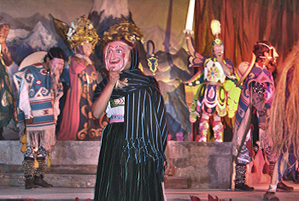
The pastorela characters mounted the stage dancing, singing, and rejoicing over the birth of the Niño Dios.
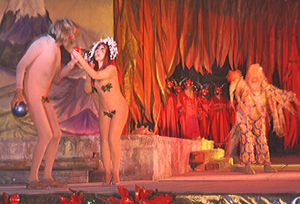
Adam and Eve were the first to take the devil's bait: Adam bit the apple and all hell broke loose.

Still singing, the shepherds, in typical indigenous Purhépecha dress, started their trip to Bethlehem.
El ermitaño (the hermit), portrayed as a post-elderly (think 200 years old) fellow, leads the shepherds (in this case, indigenous Purépecha from Michoacán) on the long trip to Bethlehem. The Archangel Michael warns them that they'll see the devil in the disguise of famous and fascinating people. When Satan begins to tempt the simple shepherds, they easily fall into his traps.
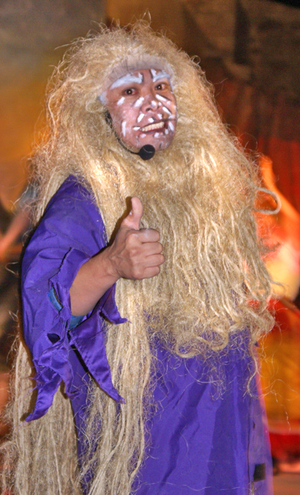
El ermitaño (the hermit) co-starred with Satan.
Famously rival Mexican soccer teams, a drunken debauch complete with Caribbean dancers in flounced skirts and turbans, and an angelic choir are all devils in disguise. In every encounter, Archangel Michael has to intervene to prod the shepherds on their way. Topical jokes ran wild, references to the famous and the infamous flew, and we loved it all.
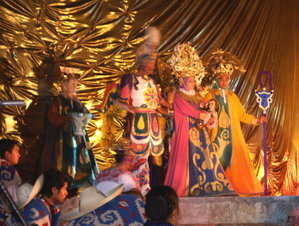
Finally, Bethlehem! The Virgin Mary holds the Niño Dios as St. Joseph and the shepherds look on.
The pastorela story was typically good conquers evil, but what a production! Acted, danced, and sung by professionals, the morality play kept the crowd (packed into bleachers on two sides of the open stage) laughing, clapping, booing and hissing, and singing along with Mexico's treasured and iconic villancicos (Christmas carols).
[youtube=http://www.youtube.com/watch?v=07FjX4R1d-s&w=350&h=263]
Listen to this lovely version of Los Peces en el Río. Can you hear the lyric 'la Virgen lava pañales'? It means 'the Virgin is washing diapers'!
Mexico Cooks! wishes everyone a very joyous New Year, filled with good health, great happiness, and many delights.
Looking for a tailored-to-your-interests specialized tour in Mexico? Click here: Tours.
